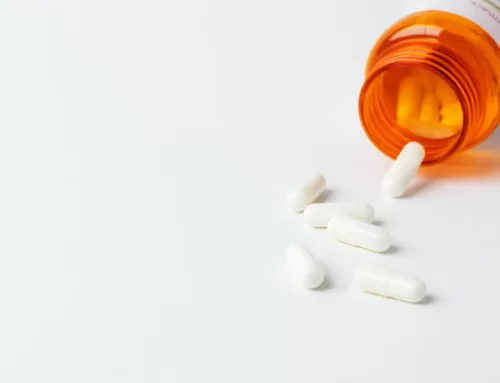
A Simple Guide to Marijuana Detoxing at Home
Marijuana, also known as cannabis or weed, is one of the most commonly used substances worldwide. In the United States alone, approximately 19% of Americans or 52.5 million people, reported using cannabis at least once in 2021.
While many individuals use marijuana recreationally or for medicinal purposes, it’s essential to recognize that regular use can lead to dependence. Studies indicate that about 9% of those who experiment with marijuana develop dependence, with this rate increasing to approximately 17% for those who start using in their teens.
Detoxing from marijuana is an important step toward improving overall well-being. While some may attempt to detox at home, it is not recommended due to the uncomfortable withdrawal symptoms that can arise.
Seeking professional support at a detox facility ensures a safer, more comfortable experience with medical guidance, structured care, and resources to help individuals navigate the process successfully. This guide provides essential steps that can be used as aftercare following a supervised detox.
Understanding Marijuana Dependence
Marijuana dependence, also referred to as cannabis use disorder, is characterized by the continued use of cannabis despite significant negative impacts on one’s life and health. This condition encompasses both physical and psychological aspects, leading individuals to prioritize marijuana use over other important activities and responsibilities.
Signs and Symptoms of Marijuana Dependence
Common indicators of marijuana addiction include:
- Loss of Control:Consuming more marijuana than intended or over a longer period than planned.
- Inability to Quit:Persistent desire or unsuccessful efforts to cut down or control marijuana use.
- Time Investment:Spending a significant amount of time obtaining, using, or recovering from the effects of marijuana.
- Cravings:Experiencing strong desires or urges to use marijuana.
- Neglected Obligations:Failing to fulfill major role obligations at work, school, or home due to recurrent marijuana use.
- Social and Interpersonal Problems:Continuing marijuana use despite having persistent or recurrent social or interpersonal problems caused or exacerbated by its effects.
- Reduced Activities:Giving up or reducing important social, occupational, or recreational activities because of marijuana use.
- Risky Use:Using marijuana in situations where it is physically hazardous, such as driving.
- Tolerance:Needing increased amounts of marijuana to achieve the desired effect or experiencing diminished effect with continued use of the same amount.
- Withdrawal:Experiencing symptoms such as irritability, anxiety, sleep disturbances, and decreased appetite when not using marijuana.
Withdrawal Symptoms
When discontinuing marijuana use, individuals may experience withdrawal symptoms due to the body’s adjustment to the absence of cannabinoids. These symptoms can vary in intensity and duration, influenced by factors such as the frequency and quantity of use, individual physiology, and the presence of co-occurring mental health conditions.
Common Physical Symptoms:
- Sleep Disturbances:Insomnia or disrupted sleep patterns are frequently reported during marijuana withdrawal.
- Appetite Changes:A decrease in appetite, potentially leading to weight loss, is common.
- Gastrointestinal Discomfort:Nausea, abdominal pain, and other digestive issues may occur.
- Headaches:Some individuals report experiencing headaches during the withdrawal phase.
Common Psychological Symptoms:
- Irritability and Aggression:Increased feelings of irritability, anger, or aggression are commonly observed.
- Anxiety:Heightened nervousness or anxiety is a frequent psychological symptom.
- Depressed Mood:Feelings of sadness or depression can emerge during withdrawal.
- Restlessness:A general sense of restlessness or difficulty relaxing is often reported.
Timeline of Withdrawal
Week 1: The Onset of Symptoms
Within the first 24 to 48 hours of quitting,initial withdrawal symptoms begin to surface. Physical discomforts such as headaches, sweating, chills, and digestive issues may arise. Sleep disturbances, including insomnia and vivid dreams, often start during this period. Many people experience heightened anxiety, restlessness, and irritability as their body starts adjusting to the absence of THC.
Week 2: Peak Withdrawal
This is often the most challenging stage. Psychological symptoms like mood swings, increased irritability, and intense cravings tend to peak. Sleep problems may persist, with many experiencing difficulty falling or staying asleep. Some individuals notice a significant loss of appetite, nausea, or gastrointestinal discomfort. Emotionally, anxiety and feelings of depression can become more pronounced, making this phase particularly difficult.
Week 3: Gradual Improvement
By the third week, physical symptoms such as nausea, headaches, and digestive issues usually start to fade. Sleep may still be inconsistent, but most people begin to experience more restful nights. While mood swings and anxiety may still linger, they tend to be less intense than in the previous weeks. Cravings for marijuana may still occur, but they often become less frequent.
Week 4 and Beyond: Recovery and Stabilization
Most of the physical withdrawal symptoms have fully subsided by this point. Psychological effects such as mild depression, irritability, or occasional cravings may linger but are generally much weaker.
At this stage, the challenge shifts from managing withdrawal to maintaining new routines and coping strategies. While some people may still experience the occasional urge to use marijuana, most report feeling significantly better and more in control of their habits. If lingering symptoms persist or significantly interfere with daily life, seeking additional support may be beneficial.

How to Manage Life After Detox
The post-detox phase is important for maintaining progress and preventing relapse. Without THC in your system, your body and mind will continue to adjust, and developing a structured approach to self-care can make a significant difference in staying on track.
Prioritize Physical and Mental Well-being
Your body is still healing from the effects of marijuana use, so focusing on health is essential. Eating nutrient-rich foods, staying hydrated, and maintaining a consistent sleep schedule can help restore balance. Exercise, such as yoga, walking, or strength training, can naturally boost mood and energy levels while reducing anxiety and cravings.
Mental well-being is equally important. Meditation, deep-breathing exercises, and mindfulness techniques can help manage stress and emotional fluctuations. If anxiety or depression persists, seeking therapy or counseling can provide valuable coping strategies and support.
Establish Healthy Routines
Structure can maintain progress post-detox. Creating a daily schedule that includes work, hobbies, exercise, and relaxation can help fill the time previously spent using marijuana. Developing new habits, like journaling, learning a new skill, or engaging in creative activities, can provide positive distractions and reinforce a substance-free lifestyle.
Recognize and Manage Triggers
Identifying situations, emotions, or people that may tempt you to return to marijuana use is a critical part of relapse prevention. Common triggersinclude stress, boredom, social settings where marijuana was previously used, and certain environments. Developing a plan to handle these situations—whether through alternative coping mechanisms, support groups, or avoiding high-risk scenarios—can be helpful in staying on track.
Stay Connected to a Support System
Recovery isn’t something that should be done alone. Surrounding yourself with supportive friends, family, or a recovery community can provide encouragement and accountability. Attending therapy, joining a recovery group, or engaging in peer support programs can help maintain motivation and provide guidance from others who have walked a similar path.
Consider Professional Support
Post-detox challenges may require additional professional help. Outpatient therapy, counseling, or an intensive outpatient program (IOP)can provide ongoing support to address underlying issues and reinforce long-term sobriety. A mental health professional can also help address co-occurring conditions such as anxiety, depression, or PTSD, which can impact recovery.
Set Long-term Goals
A strong post-detox plan includes setting goals for personal growth and long-term recovery. These can be as simple as maintaining a healthy lifestyle, improving relationships, or pursuing new interests. Breaking goals into manageable steps can help maintain focus and provide a sense of accomplishment.
If you or someone you know is struggling with marijuana dependence, remember that help is available. Recovery is not about willpower alone. It’s about having the right tools and support to build a healthier future. Contact us at Embark Recoveryto get help.
Recent
- Social Isolation and Addiction Treatment: How Prescott Rehab Helps Residents Reconnect
- From Prescription Painkillers to Fentanyl: Why People Turn to Rehab Centers Chandler for Help
- How Drug Treatment Centers Near Me Address Nightlife Triggers for Relapse
- How Peer Pressure Shapes Early Drug Habits and How Outpatient Recovery Curbs Teen Substance Abuse
- The Ultimate Guide to Choosing the Right Drug Rehabilitation Center in Prescott, AZ







